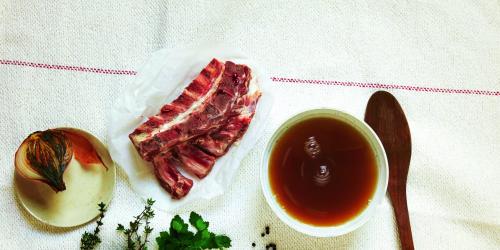Glutamate is a non-essential natural amino acid that our body can make from other sources. It is one of the twenty amino acids components of proteins. It is found in quantity in the brain, kidneys and liver. It is very present in breast milk. It is essential to our metabolism because it is a source of energy for the gut and neurotransmitter.
There are two forms of glutamate: bound glutamate because bound with other amino acids forming a protein; free glutamate, a simple amino acid found in many animal and plant proteins.
Glutamate in our diet
Protein bound glutamate is present in many foods such as meats, fish and cereals. Free glutamate is present in some foods such as cheeses (parmesan), soy sauce, ripe tomatoes. It is one of the basic ingredients of Asian cuisine.
Monosodium glutamate is a flavor enhancer. It is added to many prepared dishes (code E621). It brings out the taste of tomato sauces and pizzas, as well as meat and broth extracts. Studies have shown that it stimulates appetite and has the advantage of containing three times less sodium than table salt.
Controversial glutamate
Glutamate is suspected of being responsible for "Chinese restaurant syndrome", but the allergic reaction to glutamate is not scientifically proven. It is presented as a food presenting no risk to health. So, glutamate, friend or foe?
There are two forms of glutamate: bound glutamate because bound with other amino acids forming a protein; free glutamate, a simple amino acid found in many animal and plant proteins.
Glutamate in our diet
Protein bound glutamate is present in many foods such as meats, fish and cereals. Free glutamate is present in some foods such as cheeses (parmesan), soy sauce, ripe tomatoes. It is one of the basic ingredients of Asian cuisine.
Monosodium glutamate is a flavor enhancer. It is added to many prepared dishes (code E621). It brings out the taste of tomato sauces and pizzas, as well as meat and broth extracts. Studies have shown that it stimulates appetite and has the advantage of containing three times less sodium than table salt.
Controversial glutamate
Glutamate is suspected of being responsible for "Chinese restaurant syndrome", but the allergic reaction to glutamate is not scientifically proven. It is presented as a food presenting no risk to health. So, glutamate, friend or foe?


